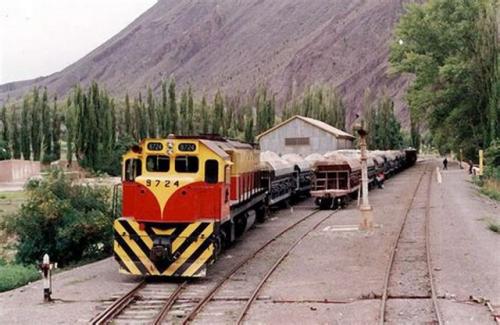Chinese land transport in Latin America
- Opinión

The Latin American Economic Observatory has analysed China's renewable energy, banking, and maritime transport presence. This article reviews some of China's road and rail projects in the region and their implications.
Land transport is vital for a project as ambitious as the New Silk Road, which seeks to place China at the centre of world trade. Connecting Latin American cities and ports with Chinese ports is fundamental to this. In the context of trade and territorial disputes with the US, it is seeking to build more and better land routes in South America to speed up the flow of capital.
There are two significant sources of financing: the Chinese and those of the IDB and CAF, for road and rail construction projects. The loans come from the Export-Import Bank of China and the China Development Bank (CDB). They have already lent the region just over $122 billion from 2005 to 2019 for energy, infrastructure, and mining investments, among others. Total infrastructure lending, which includes roads and railways, amounts to $25 billion.
In 2010, CDB lent $10 billion to Argentina. Of this amount, $2.5 billion went for the repair of 1300 km of two railway lines; $1.85 billion for the modernisation of the General Belgrano line, which runs through 14 provinces and is an important line for the transport of agricultural products; and $1.8 billion for four lines of the Cordoba metro. In 2020, another $388 million went for the Belgrano Cargas company. The China Machinery Engineering Corporation will renovate 100 km of tracks. In addition, the reactivation of the General San Martín line stands out, with an investment of $2.6 MMD by the China Railway Construction Corporation.
In the rest of the region, there is also extensive participation of Chinese investment. In Peru, the company China Railway started, in 2018, the remodeling and maintenance of the Huánuco-La Unión-Huallanca road as a project of the Ministry of Transport with an investment of $450 MDD. In Colombia, in 2019, China Civil Engineering Construction Corporation won the contract to build the passenger train from Bogotá to Facatativá with $3.6 billion. In the same year, an agreement was announced by the Colombian Government with a Colombian subsidiary of China Construction America to build the 456 km Santana-Mocoa-Neiva highway in the south of the country. In Mexico, a 19-year contract was signed in 2020 for CRRC Zhuzhou Locomotive to modernise and control line 1 of the Mexico City metro.
Bolivia is the territory with the most highways under construction by Chinese companies. In 2019, China Water Resources & Electric Power Corp began the road from San Ignacio de Moxos to Trinidad; Railway Construction Corporation started a 508 km highway, with an investment of just over $500 MDD in the Bolivian Amazon; and, lastly the Chimoré-Villa Tunai highway in Cochamba.
Two projects that did not materialise for reasons unrelated to Asian economic financing include, in Mexico, the CDMX - Querétaro train plan by the China Railway Construction Corporation, which was canceled due to corruption by the Mexican state. The Chinese company claimed reparations of $600 MDD yet only received $16MDD. The other one is the Brazil-Peru transcontinental railway, proposed in 2008, which attracted the interest of Chinese companies to build it since 2014, but never materialised. The Brazilian Government demanded the manufacture of the cars, which the Chinese Government rejected.
US pressure is a brake on many projects. The terror of the foreign debt with China and the US government's distrust of the New Silk Road in America coerce Latin American governments. Claver-Carone, president of the IDB and former White House national security adviser to the Trump administration, told the Financial Times that China gets many construction contracts financed by the Inter-American Development Bank for infrastructure projects. The US is a significant shareholder. He did not say that China provides a third of the funds in trust. IDB lending is, in any case, complementary to the direct funding coming from Asia. According to the US Government, the region is a disputed territory that the US needs to protect "its national security and the future of its economy." Ultimately, it is an attempt by the US government to reassert its regional leadership in the face of evident weakness.
Num.18 Year 2021, May 31st
- Carlos de León, Posgrado Facultad de Economía, UNAM, miembro del obela.org.
- OBELA: Observatorio Económico Latinoamericano. Oscar Ugarteche (Coord), Armando Negrete, Bertin Acosta, Jorge Zavaleta, Hiromi Iijima.
Del mismo autor
- Financing for Latin America's energy transition 15/12/2021
- Financiamiento para la transición energética latinoamericana 14/12/2021
- ¿Una crisis económica en China? 21/10/2021
- An economic crisis in China? 21/10/2021
- Latin America's post-pandemic energy transition 14/09/2021
- La transición energética latinoamericana pospandémica 14/09/2021
- Transporte terrestre chino en América Latina 02/06/2021
- Chinese land transport in Latin America 02/06/2021
- Chinese ports and docks in Latin America 06/04/2021
- Puertos y muelles chinos en América Latina 06/04/2021








